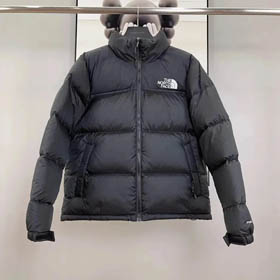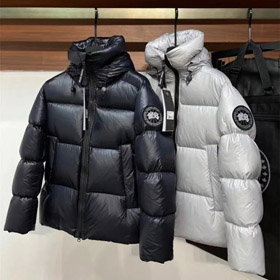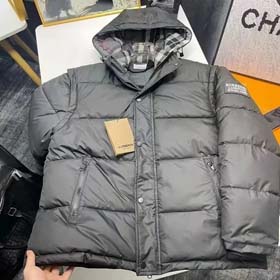The Enduring Legacy of Louis Vuitton: Crafting Luxury, Travel, and Timelessness
2025-04-14
The Enduring Legacy of Louis Vuitton: Crafting Luxury, Travel, and Timelessness
In the realm of luxury fashion, few names command as much reverence and recognition as Louis Vuitton (LV). Since its founding in 1854, the brand has evolved from a Parisian trunk-making atelier into a global icon of sophistication, innovation, and timeless elegance. Rooted in the principles of craftsmanship, functionality, and artistic collaboration, Louis Vuitton has not only defined the luxury travel experience but also reshaped the landscape of high fashion, becoming a symbol of status, heritage, and enduring style.
The Visionary Founder: Louis Vuitton and the Birth of a Legacy
Louis Vuitton's story begins with a young man from rural France who arrived in Paris at the age of 16, driven by ambition and a passion for craftsmanship. Born in 1821 in Anchay, he started his career as an apprentice to a 木箱匠,honing his skills in creating durable and elegant trunks. In an era when travel was becoming a symbol of status, traditional trunks were heavy, cumbersome, and prone to water damage, often featuring rounded tops to shed rain but limiting stacking ability.
In 1854, Louis Vuitton opened his first workshop at 4 Rue Neuve des Capucines in Paris, introducing the caisse plate—a flat-topped trunk that was lightweight, stackable, and lined with waterproof canvas. This revolutionary design catered to the needs of the growing bourgeoisie, who sought both practicality and refinement in their travel gear. The iconic gray-and-white toile
The Art of Travel: Redefining Luxury on the Move
Louis Vuitton's early success was built on its commitment to enhancing the travel experience. The brand's trunks were not just containers but works of art, customized to meet the unique needs of clients—from aristocrats to explorers. Specialized trunks included wardrobes on wheels, picnic sets, and even cases for transporting champagne or musical instruments. Each trunk was handcrafted with precision, featuring brass hardware, leather trim, and the signature LV padlock, symbolizing security and exclusivity.
In 1896, following Louis Vuitton's death, his son Georges took over the company, expanding its reach beyond Europe and registering the Monogram canvas as a trademark. The 20th century saw the brand embrace new forms of travel, responding to the rise of automobiles and air travel with compact luggage and elegant accessories. In 1914, the Louis Vuitton store on the Champs-Élysées became the largest travel-goods store in the world, solidifying its position as the ultimate luxury travel companion.
From Trunks to Fashion: The Evolution into a Luxury Empire
While Louis Vuitton began as a trunk-maker, its foray into ready-to-wear fashion marked a pivotal expansion of its legacy. In 1977, the brand introduced its first leather goods collection, including the NoéSpeedyKeepallNeverfull
In 1984, Louis Vuitton went public and joined the LVMH (Louis Vuitton Moët Hennessy) group in 1987, marking the start of its global luxury empire. The brand's success was further amplified by visionary designers who brought fresh perspectives while honoring its heritage. In 1997, Marc Jacobs was appointed Creative Director, introducing a blend of streetwear and high fashion to LV. His collaborations with artists like Stephen Sprouse, Takashi Murakami, and Richard Prince merged pop culture with luxury, revitalizing the brand and appealing to a younger generation. Murakami's colorful MulticoloreCherry Blossom
Signature Elements: Symbols of LV's Identity
Louis Vuitton's aesthetic is defined by several timeless elements that have become synonymous with luxury:
1. The Monogram Canvas
The brown-and-beige Monogram pattern, with its intricate LV motifs, is more than a logo—it's a symbol of heritage and craftsmanship. Debuted in 1896, it has been reimagined through collaborations and limited editions, yet remains the brand's most recognizable feature.
2. The Damier Canvas
Introduced in 1888 as a precursor to the Monogram, the checkerboard Damier pattern (initially in red and beige, later in black and white) offers a sleek, sophisticated alternative, embodying LV's commitment to geometric precision.
3. Leather Goods Craftsmanship
Every LV bag is a testament to artisanal skill, with processes like hand-stitching, saddle-making techniques, and the careful selection of premium leathers. The VernisEpiTaïga
4. The LV Logo
Far more than a trademark, the interlocking "LV" initials represent quality, exclusivity, and a legacy of excellence. Whether embossed on leather, printed on canvas, or reinterpreted through art collaborations, the logo remains a symbol of aspiration.
Artistic Collaborations: Where Luxury Meets Creativity
Louis Vuitton has always embraced art as a core part of its identity, transcending fashion to become a cultural collaborator. From its early days creating custom trunks for artists like Jean Cocteau to modern partnerships with contemporary visionaries, the brand has blurred the lines between luxury and art.
- Takashi Murakami (2003–2017): His vibrant, whimsical designs transformed LV's Monogram into a pop art phenomenon, introducing the MulticoloreRainbow
- Jeff Koons (2017): The Masterpiece
- Virgil Abloh (2018–2021): As the first Black Artistic Director of Louis Vuitton Men's, Abloh merged streetwear, cultural commentary, and high fashion, introducing the Off-White
These collaborations not only generate buzz but also reinforce LV's position as a brand that evolves with the times, embracing diversity, creativity, and social relevance.
The Global Luxury Icon: Craftsmanship, Exclusivity, and Sustainability
Today, Louis Vuitton operates over 500 stores in more than 50 countries, each a temple of luxury with interiors designed by architects like Peter Marino. The brand's commitment to craftsmanship remains unwavering, with workshops (or ateliers) in France, Spain, and the United States where artisans spend hours handcrafting each piece, ensuring every stitch and detail meets the highest standards.
In recent years, LV has also embraced sustainability, launching initiatives to reduce its environmental footprint, such as using recycled materials and promoting ethical sourcing. The brand's "Louis Vuitton for UNICEF" campaigns and partnerships with organizations like the International Union for Conservation of Nature (IUCN) reflect its commitment to social responsibility, appealing to conscious consumers who seek meaning in their luxury purchases.
The Philosophy of Luxury: More Than a Brand, a Lifestyle
Louis Vuitton's success lies in its ability to sell not just products, but a lifestyle rooted in travel, adventure, and refinement. The brand's advertising campaigns, featuring iconic figures like Audrey Hepburn, Madonna, and more recently, Zendaya and Jimin, evoke a sense of elegance and aspiration. The tagline "The Art of Travel" encapsulates LV's ethos—transforming journeys into experiences of luxury and beauty, whether through a meticulously crafted trunk or a sleek carry-on suitcase.
LV's influence extends beyond fashion into art, architecture, and even hospitality, with the opening of the Louis Vuitton Foundation in Paris (2014), a Frank Gehry-designed cultural landmark that hosts contemporary art exhibitions, further cementing its role as a patron of the arts.
Conclusion: A Legacy Woven in Craft and Creativity
From a humble trunk-maker in 19th-century Paris to a global luxury conglomerate, Louis Vuitton has proven that true luxury is built on a foundation of heritage, innovation, and uncompromising quality. Its ability to balance tradition with modernity, craftsmanship with artistic daring, and exclusivity with cultural relevance has made it a timeless symbol of elegance and aspiration.
Whether it's a Monogram Speedy carried by a fashionista in Tokyo, a Damier Ebene briefcase in a New York boardroom, or a limited-edition artist-collaborated bag displayed as a collector's item, Louis Vuitton's creations are more than accessories—they are chapters in a story of luxury, travel, and human creativity that continues to unfold.
For more insights into the world of luxury fashion and timeless elegance, visit OOPBUY.



















